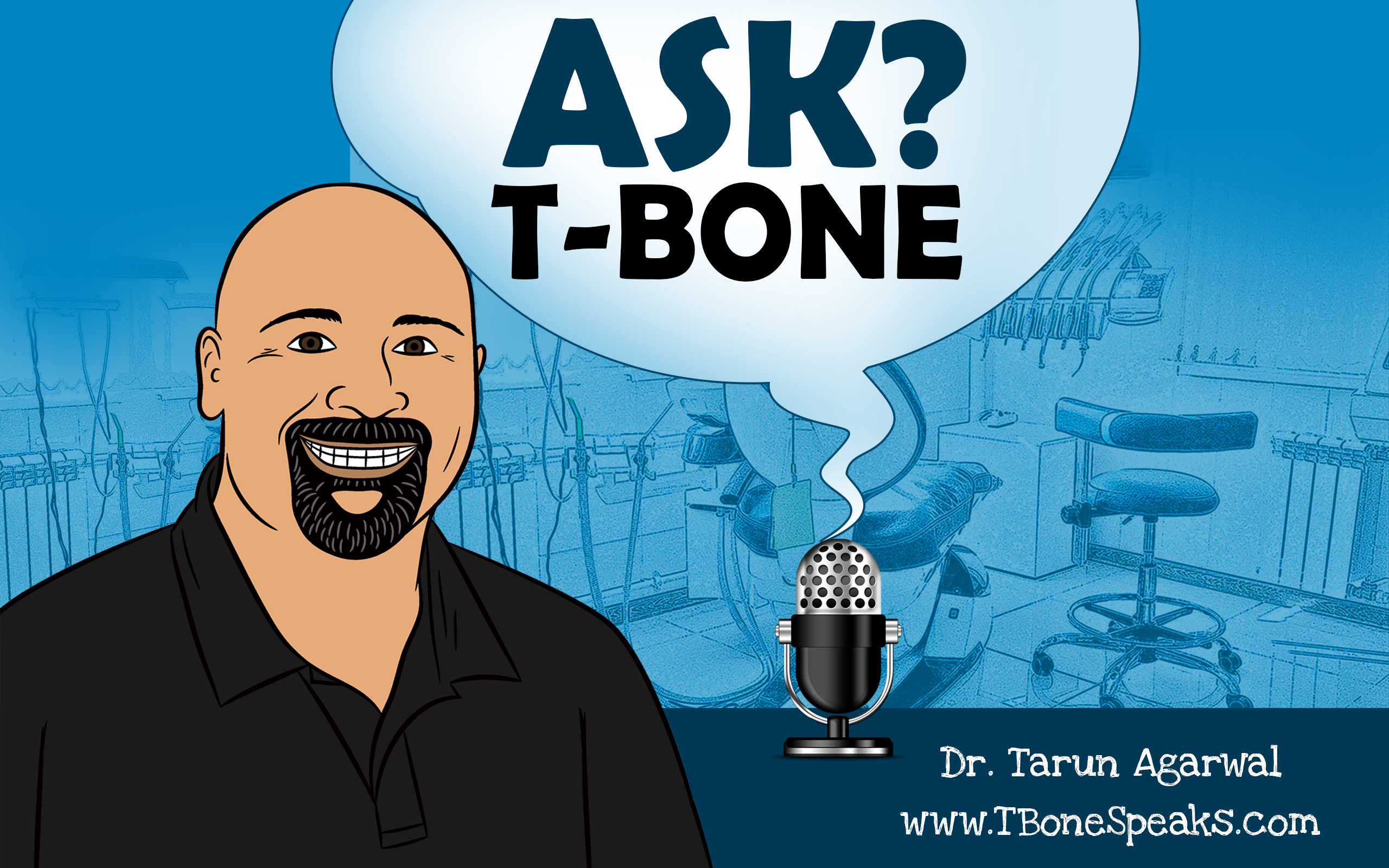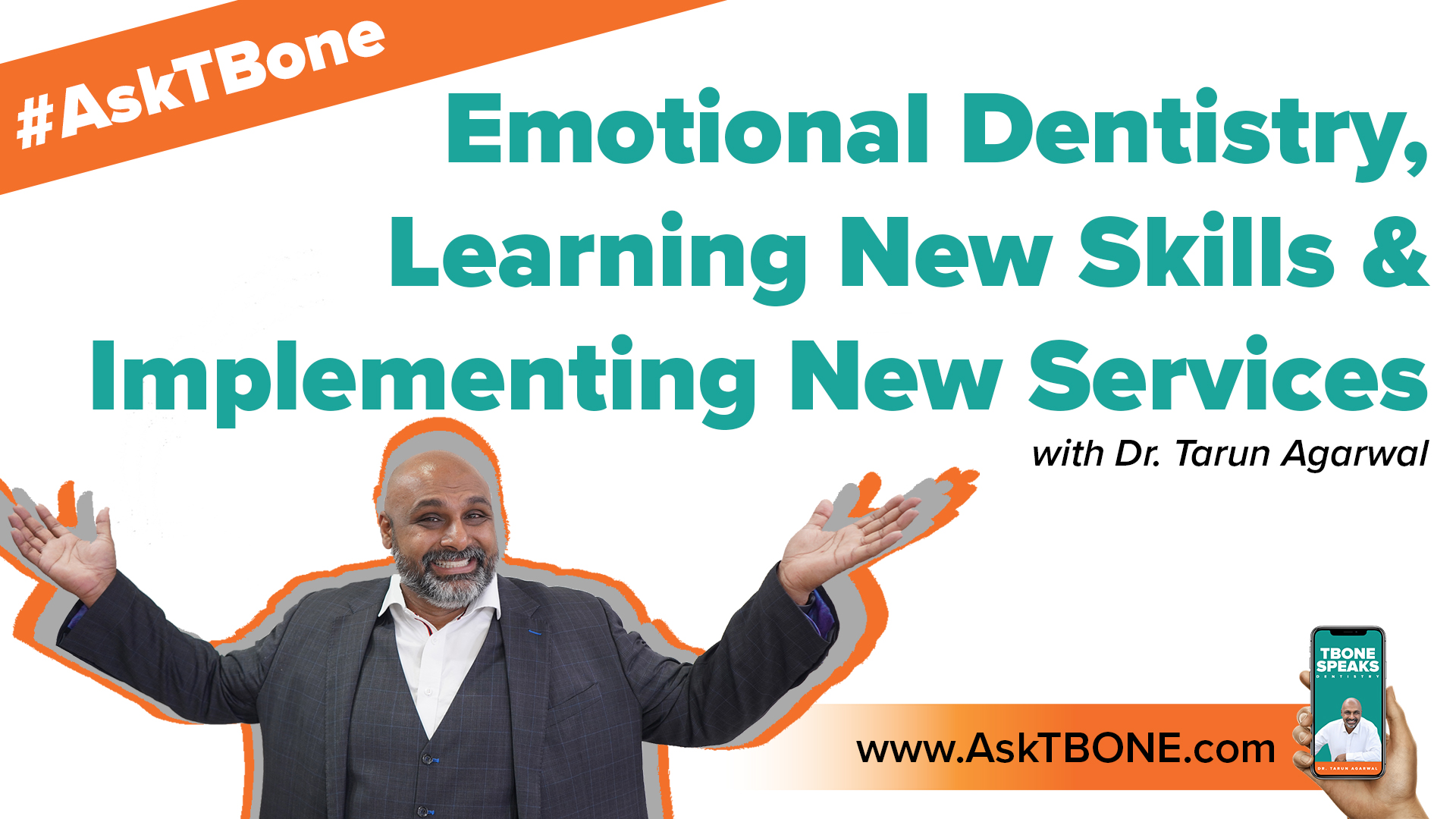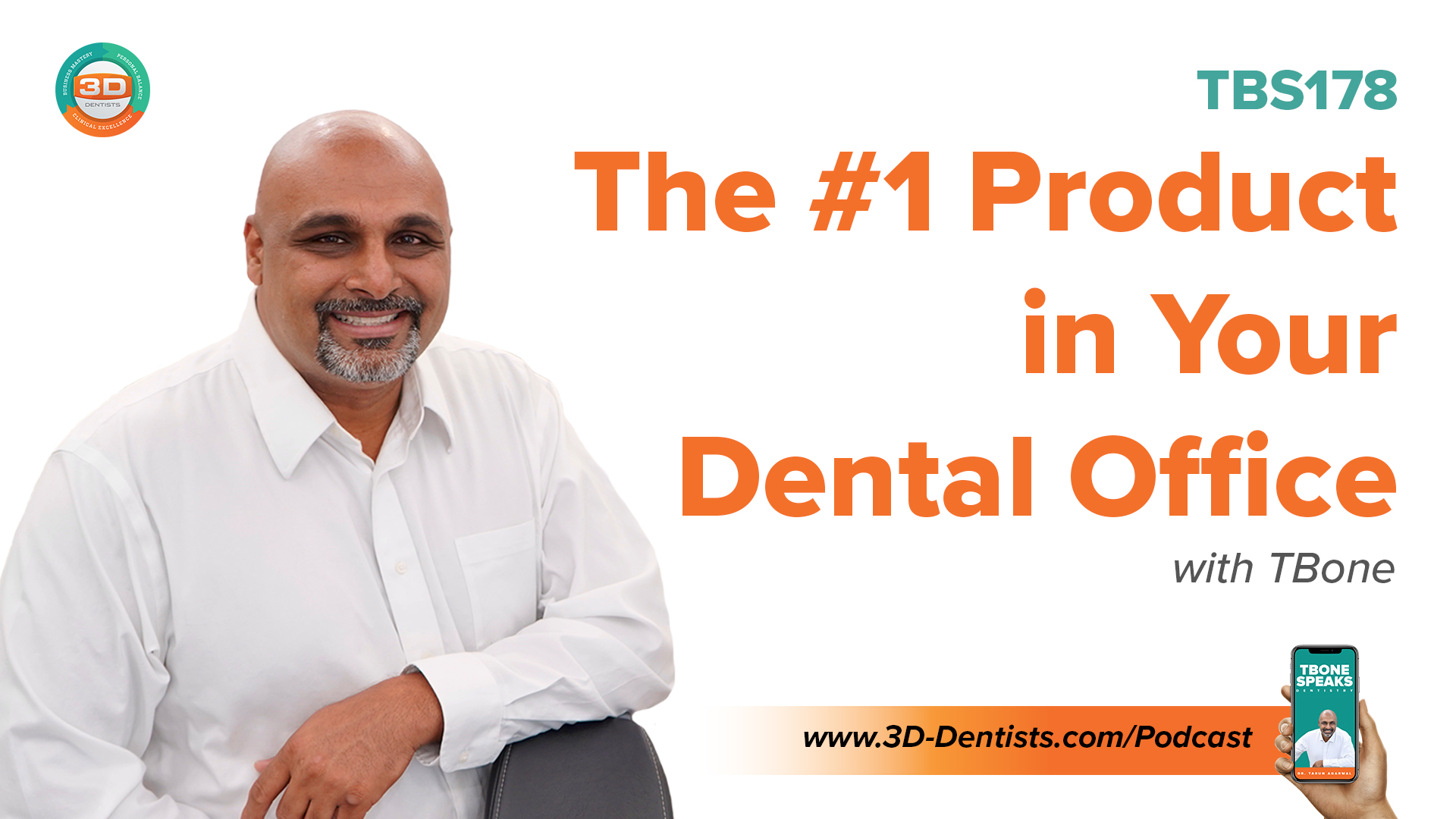Full Episode:
Hello and thank you for tuning in. Today we’re going to do another episode of T-Bone speaks, and the Ask T-bone segment. Today we have a wonderful question submitted it’s a very common question that I hear, and I am I’d like to go ahead and get into that.
I’m A Gentle Dentist in the northwest suburbs of Chicago. I have Incorporated Cone beam and CEREC into my practice. I have tried incorporating medical billing for dental procedures including CBCT and for dental implants. I have not had any good luck on our way. I have a start-up practice which I started in September 2015. Question I have, is how can I use PPO Insurance model, and get paid for CT scan. If you can share some light in your podcast topic would be great. Also, how do you incorporate CBCT into your practice?
So for this particular episode honestly I like to just focus on the medical billing incorporated CBCT into my practice, would probably be an episode in of itself, because there’s so much that we can do for that.
So let’s talk about medical billing, and this is a very very common, “yeah, but” that I hear, is that I’ve tried medical billing and I haven’t had any luck in getting reimbursement or IROI. So first let’s address what is luck in medical billing. The luck is all you’re getting paid for your claims. And really what I try to do is, I try to break it down into three distinct segments. There are those procedures that are billable to medical insurance, and those would be things that a medically necessary, that would not be root canals, that would not be fillings, that would not be crowned, but things along the diagnostic end. In other words things like exams, things like radiograph, so whether it’s a PA bitewing, pano/cephalometric, cone beam, those will all be billable procedures assuming that you can prove medical necessity. Appliances, things like sleep apnea appliances, occlusal Orthodontics, TMD Orthodontics, proving medical necessity those are very billable to medical insurance. Minor surgical procedures such as grafting, when medically necessary. Dental implant. when medically necessary. These are things that are billable to medical insurance.
Now, so that’s the first segment: Those things that are billable to medical insurance.
Next are those things I called payable through medical insurance. And what I mean by payable is I mean those procedures that would have been paid to you, but due to plan limitation such as deductibles, co-pays, in network vs. out of network, limited your ability to get paid on those things. And then we have those claims that are paid, and that’s the actual funds and dollars that we receive into our practice. And too often, I think what happens is we start medical billing for a month or two months randomly do a claim here or there, and we get no paid claims. We may have seen claims that would have been payable, had they not been deductibles, co-pays and things along those lines, and those never get counted in our mind as part of the paid claim. So then we jump to conclusions and say medical insurance wasn’t good. Or we try a homerun case. Patients came in, missing all the teeth, needed this and that done, and then we try to submit medical, we don’t understand the complexities of billing medical insurance, and we simply give up. So those things to me are unfair raps that medical insurance gets.
So number one, I want to step back now and say congratulations on opening your own practice. Congratulations on beginning your practice journey with CEREC and Cone beam, that’s certainly a wonderful endeavor. And one that does mean that you have to make things happen. Because you have the note of opening a practice, along with this technology that you have. So I understand the pressures that you’re feeling to make this technology financially viable for your practice.
So let’s get to the main part of the question is, how can I use the PPO Insurance model to get paid for CBCT.
I work alongside a gentleman by the name of Hootan Shahidi of code medical billing. In fact, we recently interviewed him for a podcast that should be either already out or just coming out depending on when this particular Ask T-bone segment gets released, and we also teach a Hands-On program. a two-day Hands-On program, focused on billing exam, CBCT, appliances in minor surgical procedures. Hootan also runs a third party company that will do the billing on your behalf for a small percentage fee. I’m not here to talk about his business or necessarily to talk about of course but mainly to answer the question.
So how do we get paid for CT scans?
First, there are a few insurances in the dental model that are starting to paid for cone beam. Here’s my challenge with that: One, we don’t know if it’s going to get paid, and two if it does get paid now you’re eating up your patients maximum out of Maximum Insurance amount. That thousand dollars that $1,500. If you take that money for the cone beam then you’re not allowing that money left for root canals and crowns and fillings and all those things that go along with the patient. Instead my preference is for us to look to medical insurance to help pay for CT scan. Now with medical insurance there is ultimately two steps. There is the procedure code, that’s the actual CT and the interpretation; and then there is the diagnosis code, and that diagnosis code is what determines medical necessity. In other words, the medical insurance is not going to pay for your cone beam simply because you own it, or simply because you felt like taking it. It’s also not going to take it because you generically take it on most or all of your patients. which is what I do as well. Instead, it’s going to say, we will pay for your cone beam, we will make it a payable no more that’s a billable claim, will make it payable claim if you can prove medical necessity.
And, what are the things that prove medical necessity?
Well, the degree to which medical necessity will be proved, will also depend on some of the nuances of the particular plan your patient has.
For example if your patient is an executive at a company with a very very high level plan, then many of those claims will get paid quite easily. If your patient is a traditional employee with a low level plan, then you’re going to have a tough burden to prove medical necessity.
So what are some things that may prove medical necessity?
Number one: A good catch all is oral cancer screening. Certainly a case can be made, that all cancer screening is done when you do a cone beam scan. It is a much more difficult to prove to be made, because the insurance company will say: “Well you can do that physically, you can do that the visually and you can also do that with a panorex, so why do I need to pay for a cone beam?
Another option, often medical necessity could be things like abscesses or cysts. Things that you need a broader field of view and a more detailed field of view, to be able to take a look at. Things along the lines of sinus complications, things where we may have mucousy or the mucus retention cyst, chronic sinusitis, deviated septums, many of those things can also prove medical necessity. Things along the lines of periapical abscesses with or without sinus involvement. These are things that can prove medical necessity, or in many cases, depending on the level of the plan, maybe you need the cone beam to ascertain the nerve position near wisdom teeth. Is it going to the lingual to the buccal? What about impacted teeth? What about when we need to place implants and we need high-level information to be able to know exactly where the nerve is an how much bone that we ?have? So these are all examples where medical necessity may be allowed through medical insurance plan. Again, nuances and plans are going to determine that. So to me, from my perspective, medical billing for cone beam, is one of the more easy things to bill, I certainly have to prove medical necessity, you have to have soap notes, when we when requested to prove this; and documentation, often times is a pre-authorization requested. So these are the things, these are the stumbling blocks that we run into.
So what I would like to do is briefly go through our workflow for billing cone beam to medical insurance.
First step as we collect the patient’s medical insurance data. We need the card we need their information we need to be able get all that information to bill.
Second will do an eligibility check. Now will determine what eligibility they have, what the ductable do they have, what plan nuances that may exist.
Third, we will look into the need for a pre-authorization. Many times a CT scan needs pre-authorization many times it does not. Final, then we will do the scan itself, we will provide diagnosis for medical necessity, we will submit the claim and then will follow any appeal process that may be necessary. So again, in our practice, we have seen about a 20% pay rate for CBCT through medical insurance, and we have found wonderful success, I consider that success, but I don’t go into it expecting 80% to 100% of it to get paid. I go into it expecting 20 to 30% of it to be paid and we’re falling right in line with that.
So hopefully this does make sense for you, and thank you so much for submitting this question and I if we can provide any help, certainly don’t hesitate to visit our website 3d-dentists.com to find out about our medical billing, of course. It’s a wonderful Workshop that will add tremendous value. One of the things that we are very good about is bringing a perspective of a busy dental practice, insurance based practice and giving you a logical workflow it allows us to focus on those things that will make an impact in our practice. Not focusing on the 20% but focusing on the 80%.
Thank you again, and I look forward to hearing from you in a future episode.
Enjoy The Show?
- Don’t miss an episode, subscribe via iTunes, Stitcher or RSS.
- Leave us a review in iTunes
- Join the conversation by leaving a comment below!








